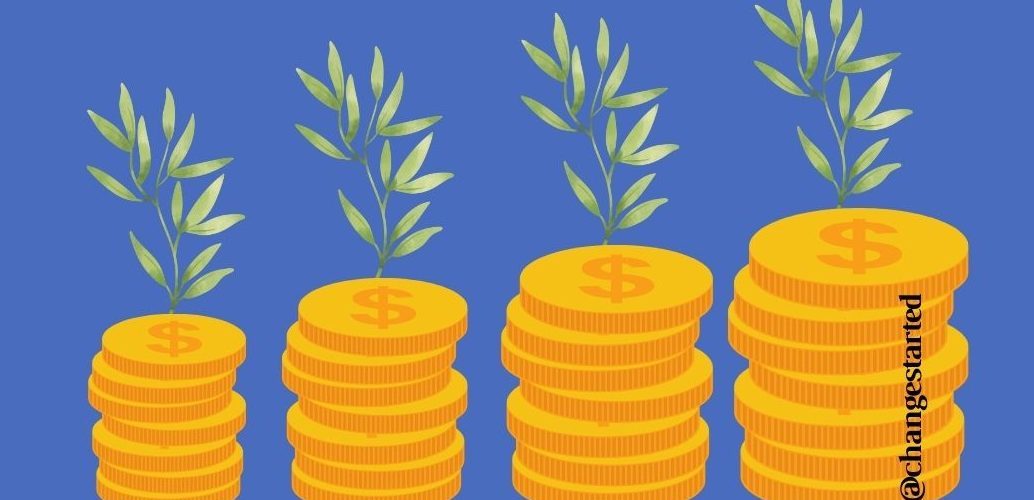Finance Minister of India, Nirmala Sitharaman presented the Indian government budget for 2023-24 on 1st February 2023. As India is celebrating Azadi Ka Amrit Mahotsav to commemorate 75 years of independence, Nirmala Sitharaman termed this as the “first Budget of Amrit Kaal”.
The Budget 2023 stated seven priorities that will guide India through this “Amrit Kaa”. These are
- Inclusive development
- Reaching the last mile
- Infrastructure and investment
- Unleashing the potential
- Green growth
- Youth power
- Financial sector
While the budget for 2023 indicated to many areas of environment and climate change, point number five, i.e. Green Growth focussed completely on reducing carbon intensity and creating green jobs.
At the CoP 26 Summit in Glasgow, Indian Prime Minister, Narendra Modi, while laying out India’s goal to become net-zero by 2070, mentioned steps for the green transition that includes Mission “LiFE”, or Lifestyle for Environment to spur a movement of an environmentally conscious lifestyle and Panchmrit.
While the last year’s Budget focussed on Energy Transition, and Climate Action, this year’s Budget takes it forward by including a focus on Green Growth. The many programs that are laid out for energy, agriculture, mobility, buildings, and equipment will help in reducing the carbon intensity of the economy and provides for large-scale green job opportunities.
Let us look at some of the important points in the Budget 2023 that were made under Green Growth.
Budget 2023 highlights Environment and Climate Change
Green Hydrogen Mission
National Green Hydrogen Mission which was launched in January 2023 with an outlay of Rs. 19,700 crores, will facilitate the transition of the economy to low carbon intensity, reduce dependence on fossil fuel imports, and make the country assume technology and market leadership in this sunrise sector. The target of the government is to reach an annual production of 5 MMT by 2030.
Energy Transition
The Budget 2023 provides Rs. 35,000 crores for priority capital investments towards energy transition and net zero objectives and energy security by the Ministry of Petroleum & Natural Gas.
Energy Storage Projects
To steer the economy on the sustainable development path, Battery Energy Storage Systems with a capacity of 4,000 MWH will be supported with Viability Gap Funding. A detailed framework for Pumped Storage Projects will also be formulated.
Renewable Energy Evacuation
The Inter-state transmission system for evacuation and grid integration of 13 GW of renewable energy from Ladakh will be constructed with an investment of Rs. 20,700 crores including central support of Rs. 8,300 crores.
Green Credit Programme
For encouraging behavioral change, a Green Credit Programme will be notified under the Environment (Protection) Act. This will incentivize environmentally sustainable and responsive actions by companies, individuals, and local bodies, and help mobilize additional resources for such activities.
PM-PRANAM
“PM Programme for Restoration, Awareness, Nourishment, and Amelioration of Mother Earth” will be launched to incentivize States and Union Territories to promote alternative fertilizers and balanced use of chemical fertilizers.
GOBARdhan scheme
500 new ‘waste to wealth’ plants under GOBARdhan (Galvanizing Organic Bio-Agro Resources Dhan) scheme will be established for promoting a circular economy. These will include 200 compressed biogas (CBG) plants, including 75 plants in urban areas, and 300 community or cluster-based plants at a total investment of Rs. 10,000 crores.
In due course, a 5 percent compressed biogas mandate will be introduced for all organizations marketing natural and biogas. For a collection of bio-mass and distribution of bio-manure, appropriate fiscal support will be provided.
Bhartiya Prakritik Kheti Bio-Input Resource Centres
Over the next 3 years, the government will facilitate 10 million farmers to adopt natural farming. For this, 10,000 Bio-Input Resource Centres will be set up, creating a national-level distributed micro-fertilizer and pesticide manufacturing network.
MISHTI
Building on India’s success in afforestation, ‘Mangrove Initiative for Shoreline Habitats & Tangible Incomes’, MISHTI, will be taken up for mangrove plantation along the coastline and on salt pan lands, wherever feasible, through convergence between MGNREGS, CAMPA Fund, and other sources.
Amrit Dharohar
Wetlands are vital ecosystems that sustain biological diversity. In his latest Mann Ki Baat, the Prime Minister said, “Now the total number of Ramsar sites in our country has increased to 75. Whereas, before 2014, there were only 26…” Local communities have always been at the forefront of conservation efforts. The government will promote its unique conservation values through Amrit Dharohar, a scheme that will be implemented over the next three years to encourage optimal use of wetlands, and enhance bio-diversity, carbon stock, eco-tourism opportunities, and income generation for local communities.
Coastal Shipping
Coastal shipping will be promoted as the energy-efficient and lower-cost mode of transport, both for passengers and freight, through PPP mode with viability gap funding.
Vehicle Replacement
Replacing old polluting vehicles is an important part of greening our economy. In furtherance of the vehicle scrapping policy mentioned in Budget 2021-22, the government has allocated adequate funds to scrap old vehicles of the Central Government. States will also be supported in replacing old vehicles and ambulances.
In addition to the above points that were mentioned as part of Green Growth priority. There were other pertinent points in the Budget that has a significant impact on the environment.
Millets or “Shree Anna”
In an era, when food production is under severe stress due to climatic disturbances, India is at the forefront of popularizing millet, whose consumption is not only good from a nutritional perspective but the crop also provides food security.
Due to a number of health benefits, millet has been an integral part of the Indian food diet for centuries. India is the largest producer and second largest exporter of millet or ‘Shree Anna’ in the world. India grows several types of ‘Shree Anna’ such as jowar, ragi, bajra, kuttu, ramdana, kangni, kutki, kodo, cheena, and sama.
The budget envisages India becoming a global hub for Shree Anna or Millets by continuing the focus on domestic production, consumption, and increasing exports. To make India a global hub for ‘Shree Anna’, the Indian Institute of Millet Research, Hyderabad will be supported as the Centre of Excellence for sharing best practices, research, and technologies at the international level.
This focus on millets will significantly help in increasing the share of gross sown area under millets, which stands at a mere 3% of the total gross cropped area.
Urban Sanitation
All cities and towns will be enabled for 100 percent mechanical desludging of septic tanks and sewers to transition from manhole to machine-hole mode. The enhanced focus will be provided for the scientific management of dry and wet waste.
Green Mobility
To provide impetus to green mobility, customs duty exemption is being extended to the import of capital goods and machinery required for the manufacture of lithium-ion cells for batteries used in electric vehicles.
Swachh Bharat
Indian government’s special flagship scheme known as “Swachh Bharat” or Clean India has its budget allocation increased from Rs. 2,300 crores in last year’s budget to Rs. 5,000 crores for this year.
Wrapping Up
Given the scale of climate change, the Indian government’s budget allocations toward climate mitigation initiatives augur well not only domestically but also for the planet as a whole.
India is the fifth largest economy, with the world’s highest population, therefore it needs economic development but not at the cost of the Planet’s well-being. This year’s budget builds on this focus on green growth economic transition.






Add comment